JENA THOMAS AND THE CAPTURE OF ATMOSPHERE
In my paintings, the world is turned into a place that is slightly more mysterious and evocative than a naturalistic landscape, as it is intended to celebrate the oddity within it.
Jena Thomas
Jena Thomas is a young painter whose research, up to now, has focused on landscape and perception. In the conjugation of both, she uses the pictorial language to denaturalize the gaze and thus show us its radically interpretative character.
Thomas is part of a generation of artists who have built a body of work while exerting a careful technical mastery of their craft, bringing closer the sensuality of the pictorial material, previously displaced by the dematerialization of the artistic object as a mark of what should be considered contemporary.
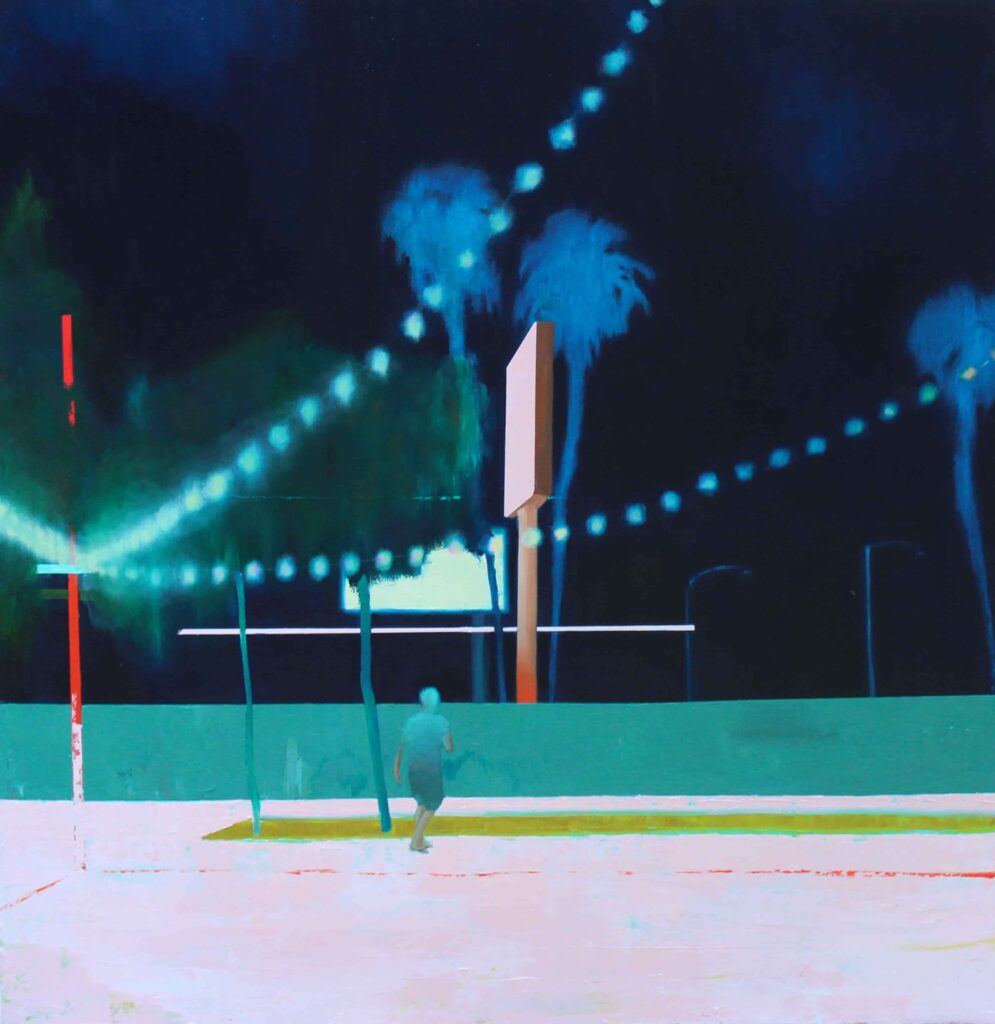
Jena Thomas
In Search of Fun, 2018
Oil on canvas, 48″ x 46″
Thomas’ work places itself in a constant transit between the natural and the artificial realms through a fictional poetics, in which the relationship between color and light is fundamental. The artist’s persistence in this relationship makes her a sensitive researcher who uses painting as a way to explore new stories about lights and shadows through which the natural world and the built one acquires a meaning that goes beyond physical places.
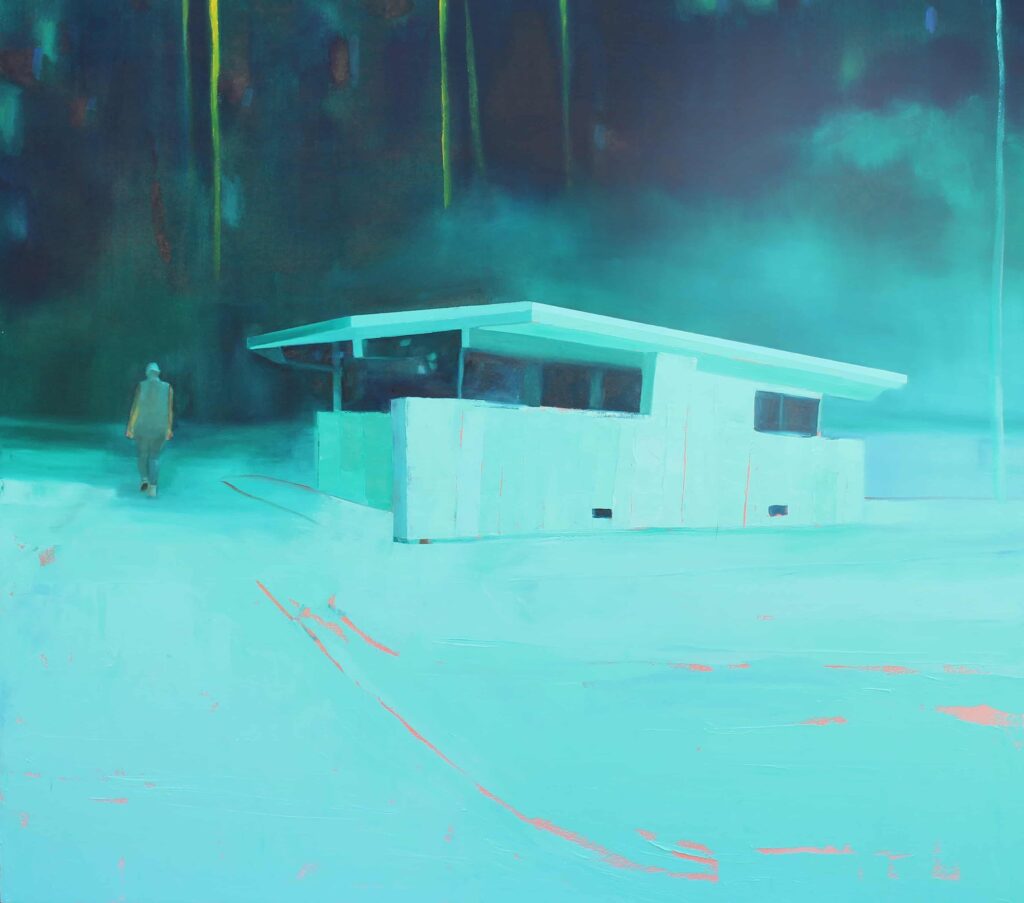
Jena Thomas
Bathroom Break, 2019
Oil on canvas, 46″ x 48″
At times, this play of lights and shadows operates through an obvious figurative language, as in In Search of Fun (2018), Bathroom Break (2019), Just Add Light (2020), and Out of Gas (2020). On other occasions, Thomas flirts with abstraction without losing easily recognizable references such as trees, buildings, vanishing lines, walls, facades, swimming pools, and, lately, the presence of the human figure.
With this approach, reality is never thoroughly supplanted but rather recreated as atmospheres that escape the parameters of the representation of “physicality” while simultaneously keeping the conditions that make it be perceived as a place once seen or a situation that might have been experienced.
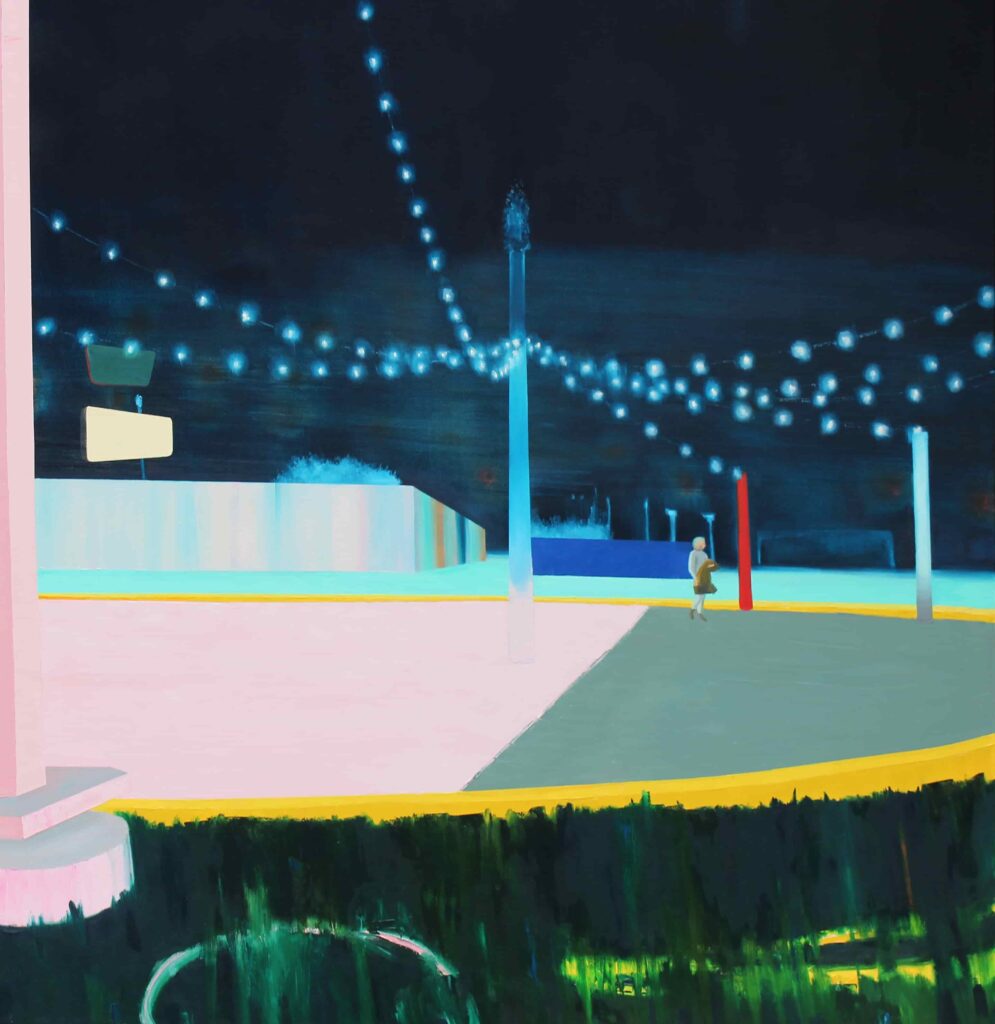
Jena Thomas
Just add light, 2020
Oil on canvas, 64″ x 60″
Thomas’ painting challenges the viewer’s gaze by defying the limits of pictorial representation through the use of several strategies, including resorting to instant photography. She initially draws upon this technological medium to record a place or a scene, thus building an archive of the different forms human interventions adopt in the natural landscape.

Jena Thomas
Out of Gas, 2020
Oil on canvas, 48″ x 40″
However, the artist’s interest in instant photography extends to the medium’s formal elements, such as the low resolution of the digital capture and the immediate printing, in which Thomas sees a way to retain the most essential elements of the encounter between the world of human artifice and the natural world, which offers her a kind of formal minimalism that matches her painting’s brushstrokes with the photographed object as its essential referent and allows her to preserve that indicial trait—a minimal anchoring to reality—which is appreciated in almost all of her work.

Jena Thomas
Camping in comfort, 2019
Oil on wood panel
12″ x 12″
When asked about the relationship between her painting and photography, Jena Thomas explains the encounter she had with a box of old family photographs was very important to her. She was fascinated by flaws such as overdevelopment or blurry close-ups. For the artist, these distortions became a collection of hybrid images that could refer to both the real and the fictional worlds, just as her painting does.
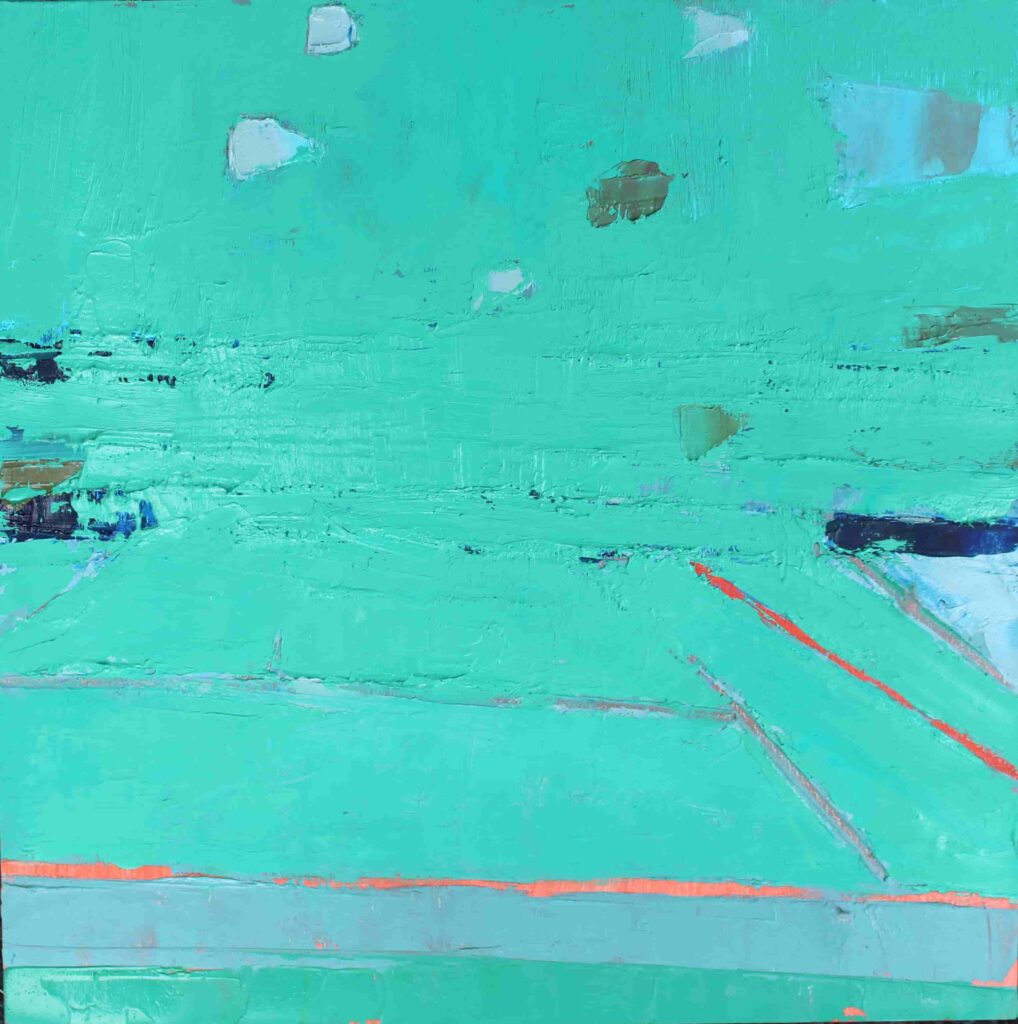
Jena Thomas
Tennis Grass, 2019
Oil on wood panel
12″ x 12″
Today, Thomas uses photographic images taken by herself during her travels. This allows her to renew her own gaze and her constant reflection on the gesture that begins the very history of the human being: leaving—and seeing—their mark on the world[1].
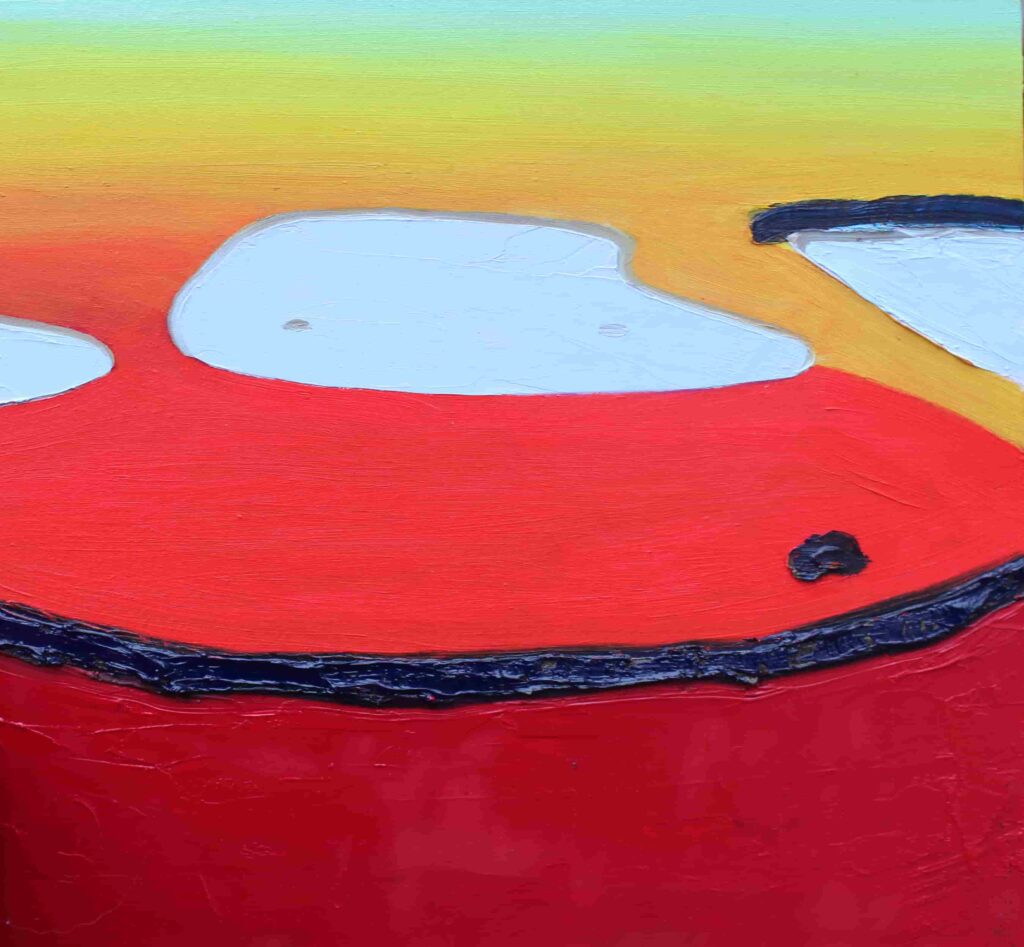
Jena Thomas
Golfing in Paradise, 2019
Oil on wood panel
12″ x 12″
Jena Thomas’ poetic/pictorial places are enigmatic. Her landscapes make up images that elude common perceptions, evading the very condition of the image to fumble between figuration and abstraction, as is emblematically shown in the works Camping in Comfort, Tennis Grass, or Golfing in Paradise, all from 2019.
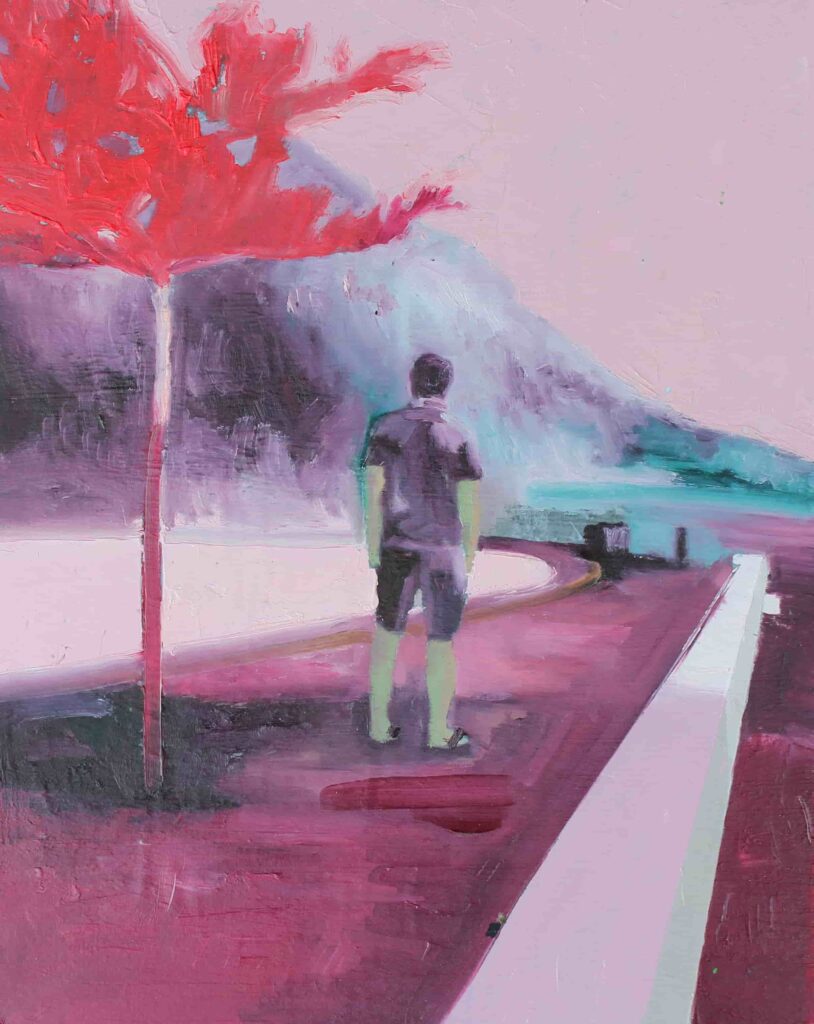
Jena Thomas
Azores Study, 2019
Oil and mixed media on canvas
10″ x 8″
What we see in them is not an intersection between these two types of representation but rather a going back and forth, a coming in and out of them. In these works, time seems to be suspended in the interiority of a strange atmosphere, sometimes because they are places, other times because they are a construction of planes and lines that seem to defy the boundaries of figurativeness as if it were a physical, actual boundary.
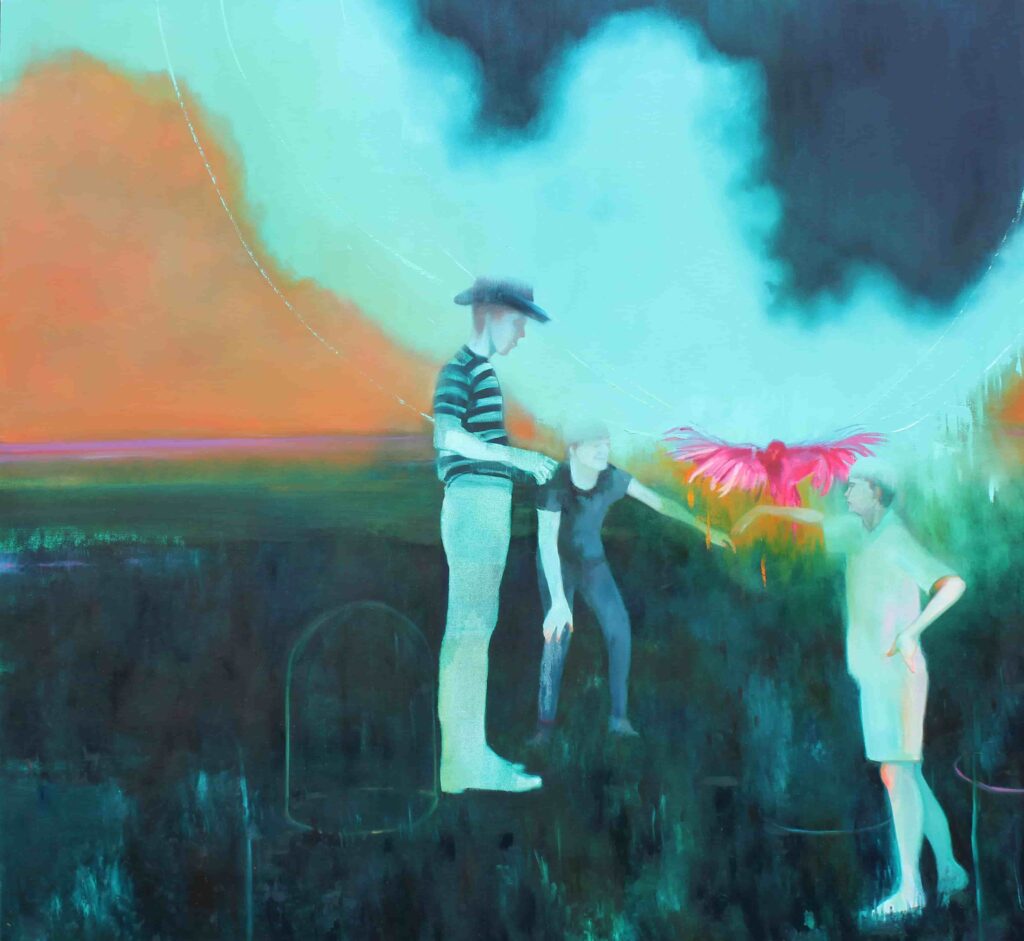
Jena Thomas
Dead Bird, 2020
oil on canvas
65″ x 70″
Thomas’ painting has been settling down into an increasingly austere color palette, where the presence of the human figure has increased to the point of becoming a significant presence in works such as Azores Study, from 2019, or Dead Bird and Acid Summer, from 2020.
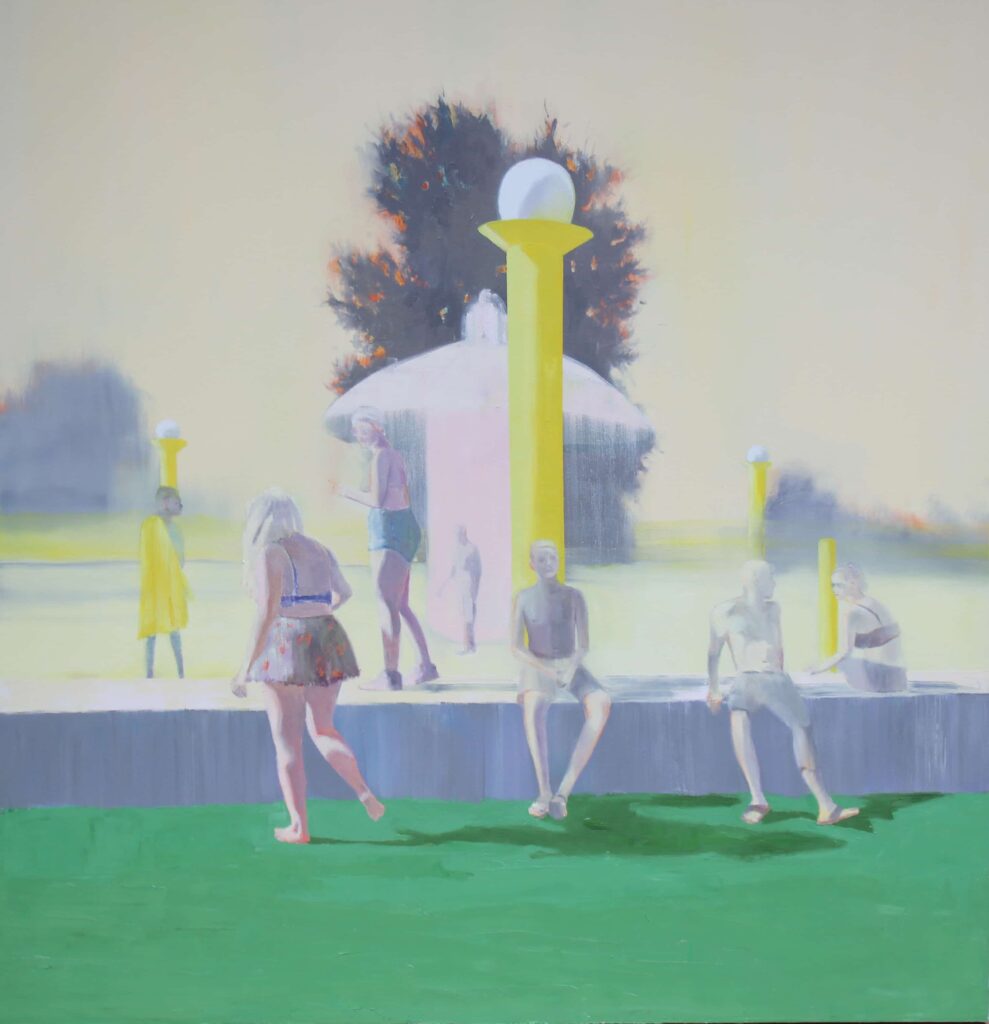
Jena Thomas
Acid summer, 2020
Oil on canvas
50″ x 48″
The creation of atmospheres and the difference between space and place characterize the work of Jena Thomas, who scrutinizes the interstice between them to do so, not only as something standing between two places but as something that may or may not be tangible. It would be about the invention of a space that is difficult to detect as a source of nourishment for experience.
Carmen Alicia Di Pasquale
Professor and researcher in Philosophy and Visual Culture. Curator.
[1] Jena Thomas mail, June 19, 2021. Carmen Alicia Di Pasquale archive.
Visitors
